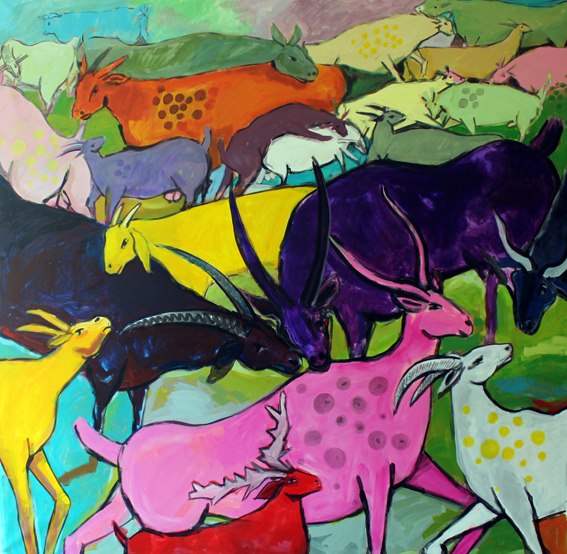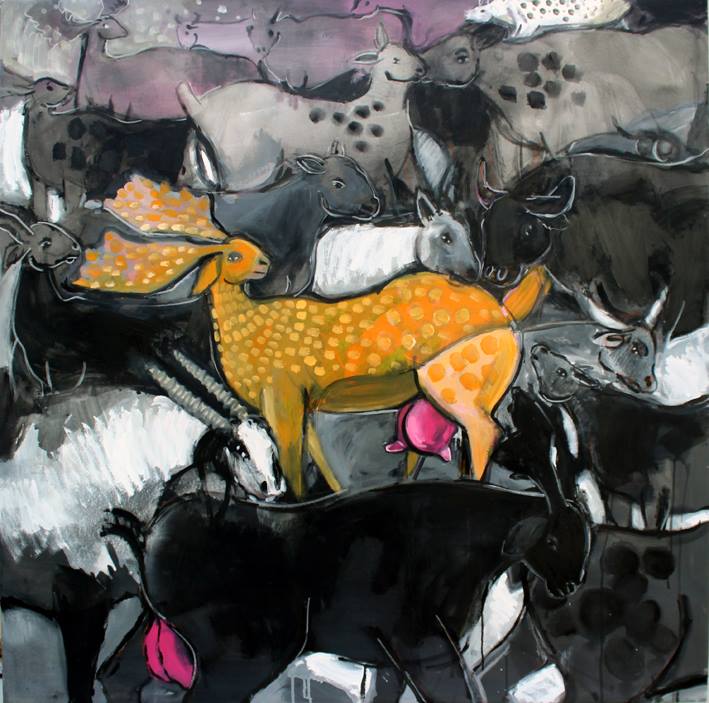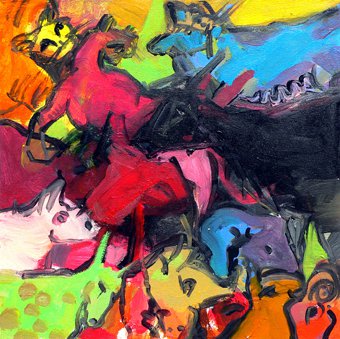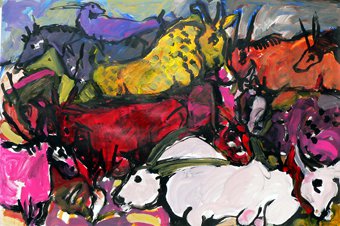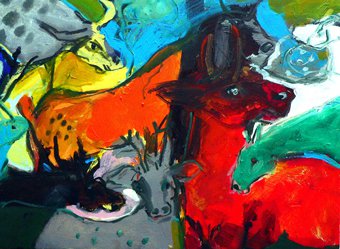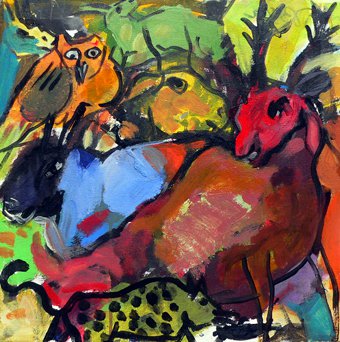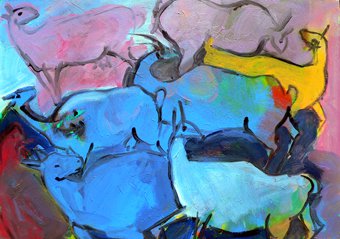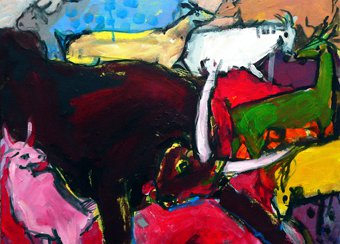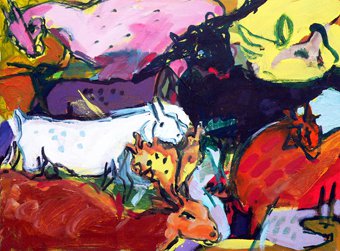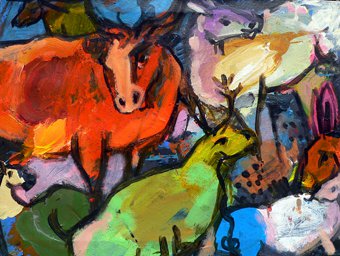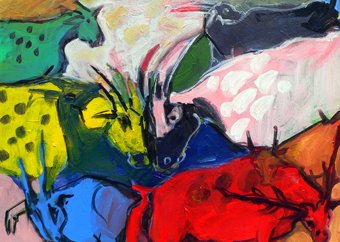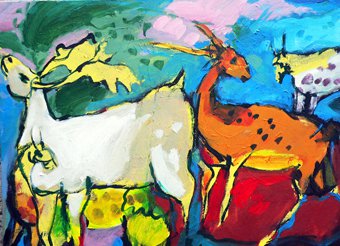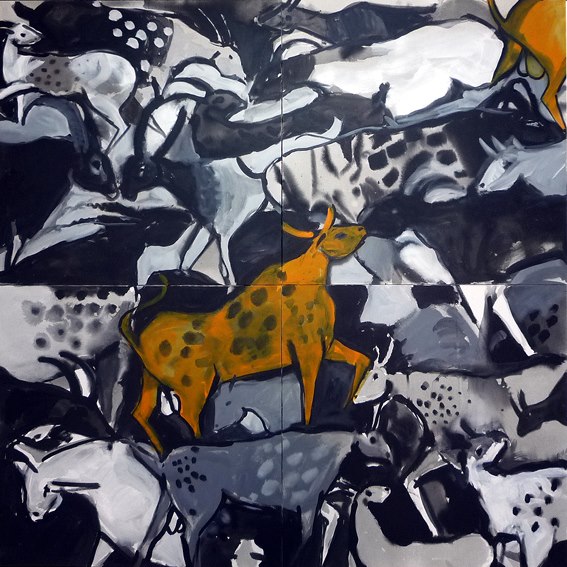Mohammad Al-Hawajri, was born at the Bureij Refugee Camp in the Gaza Strip in 1976. In 2002 Al-Hawajri founded the Eltiqa’Group for Contemporary Art in the Gaza Strip. Between 2008 and 2009 he received a grant that allowed him to reside at the Cité Internationale in Paris. Al-Hawajri participated three times (in 1999, 2000, and 2001) in the Summer Academy which was supervised by Marwan Kassab Bashi and held at Darart al Funun in Amman, Jordan. He won the first place award at the closing exhibition of the Summer Academy. Al-Hawajri’s work has been displayed in many exhibitions in Palestine and abroad. He participated in exhibitions in the UK, Italy, France, Switzerland, Austria, Japan, Argentina, USA, Dubai, Abu Dhabi, Bahrain, Qatar, Jordan, Egypt, Lebanon, Germany and Spain. His work is found in various collections including the Museum of the Arab World Institute in Paris, the Khaled Shoman collections at Darat Al-Funun, Ecole Cantonale d’Art du Valais (ECAV) Switzerland, the Casoria Contemporary Art Museum (CAM) in Naples, Italy, the Jordan National Gallery, Dar El-Nimer for Arts & Culture in Lebanon, and also in some private collections.
ugly – beautiful
About This Article
(Ugly – Beautiful) is an art project, and it is one of the strange experiences that I have produced for more than twenty years, and it is a project that came from the environment that surrounds me, and it is the result of an dialogue internal and many questions without answers, including what is art? One of the answers came through my continuous work and my belief in what I do. This old, new and contemporary project started with my journey with him since 1996, through my continuous visit to Wadi Gaza, which was our refuge to escape from the crowds of the camp in which I live in Al-Bureij camp in the central Gaza Strip. The dead animals were present in this valley, which by its nature is a rural and agricultural place that had bones of different shapes and sizes. It can be inspiring and I found in it an expressive power that reveals a contradiction between life and death. Bones are a symbol of death, but art makes them a symbol of life. Hence the Bejaia, which made me always think of presenting these bones with works of art from time to time.

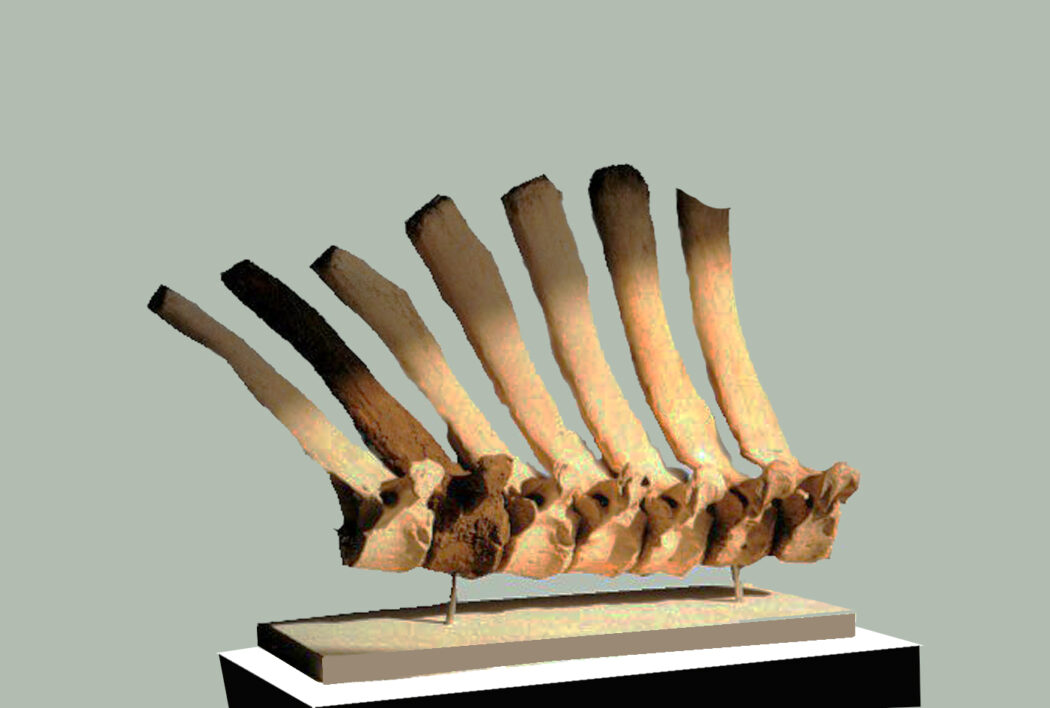

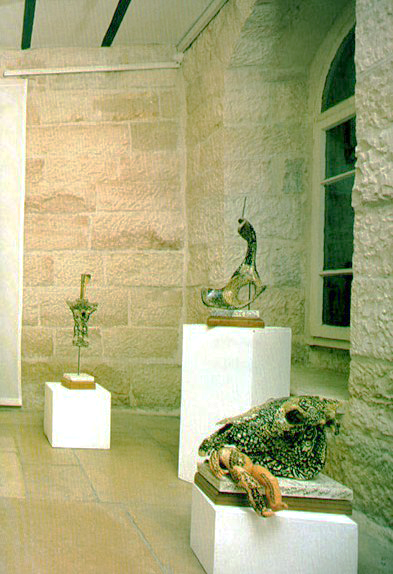


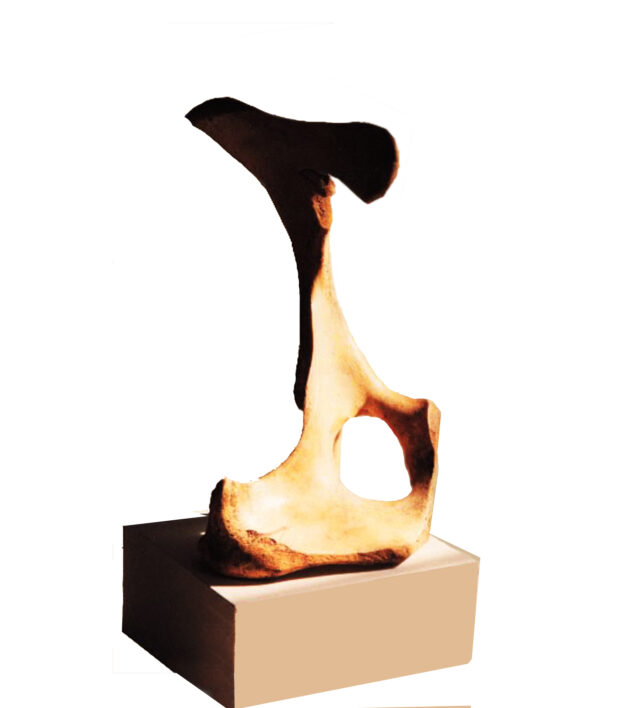
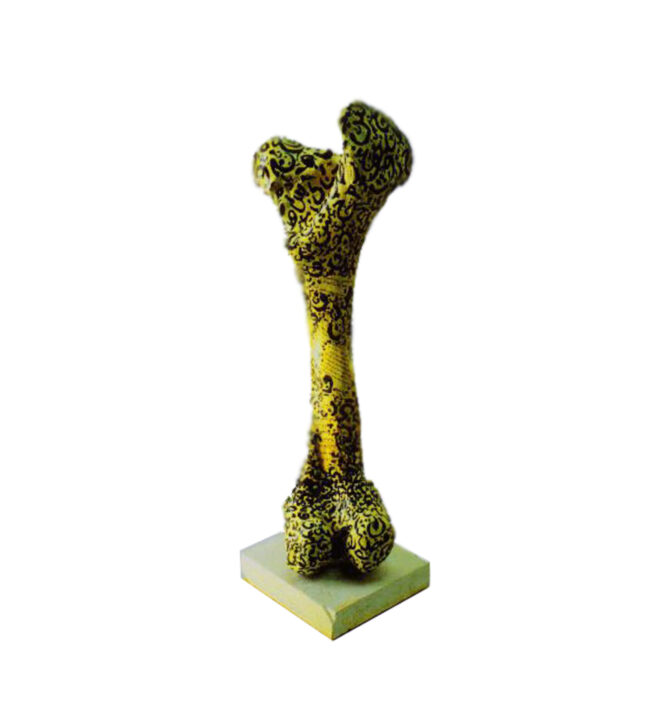


Guernica – Gaza 2010-2013
About This Article
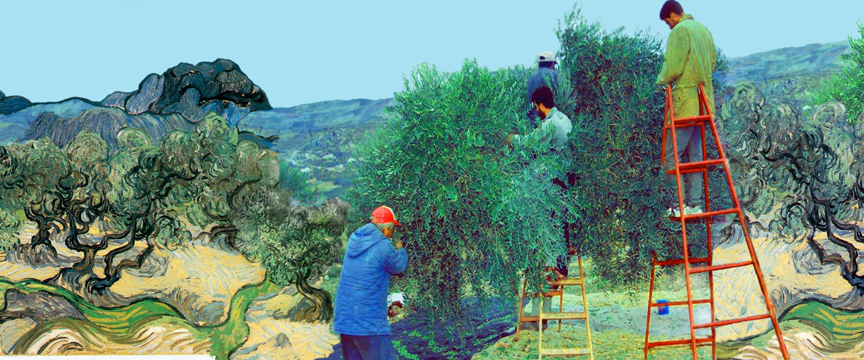

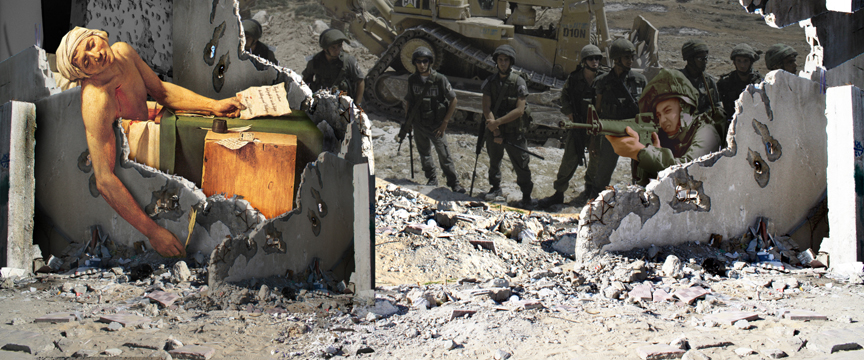
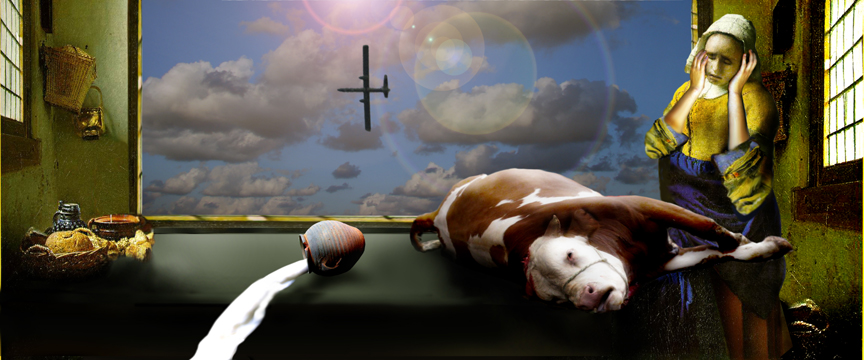

Maryam
About This Article
Maryam is the name my beloved mother whom I lived with since I opened my eyes. But my paintings reflect all mothers. Every Maryam has her own life, or the one imposed upon her in our Arab world. Despite whatever strikes her she continues to renew hope and tenderness within us. In these (art)works, I certainly showed the beauty of a woman. Her chest is decorated with images of a changing reality while we are surrounded by fluctuating reasons and circumstances. Here, the woman is like the land which sprouts and bears fruit while we are like the fixed trees, steadfast upon it. My artistic project bears the spirit of beauty. It is part of the search for hope and life at a time in which many of the beautiful things, which we have lost due to the […] political inversions, have begun to disappear. Here I would like to say that beauty helps to keep spaces of hope open for the anticipated future that will be adorned with beautiful colors. Mohammed al Hawajri 2015
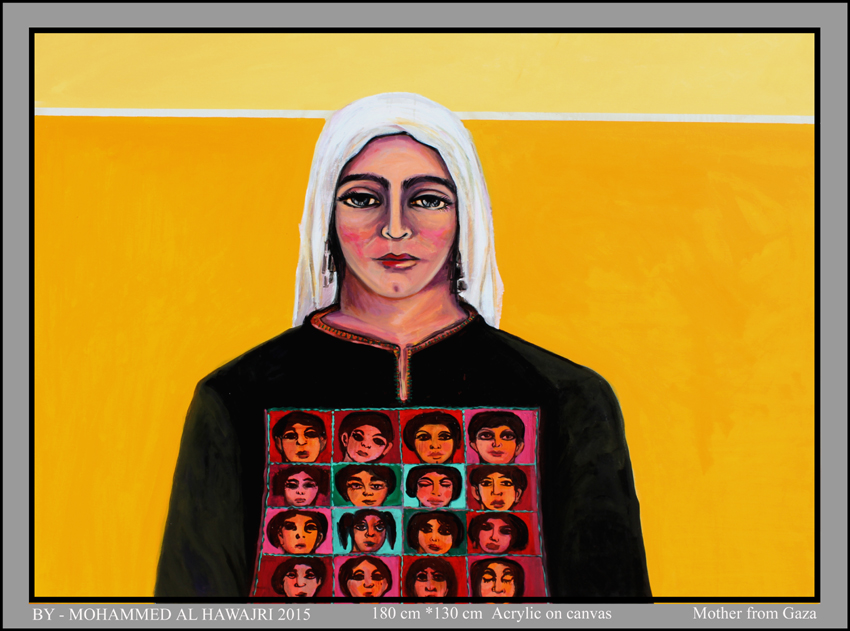
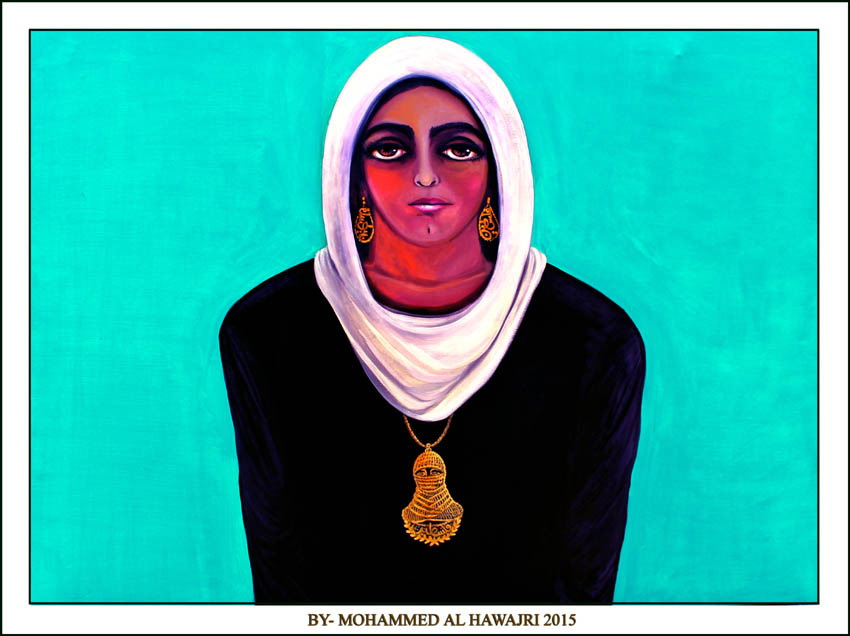


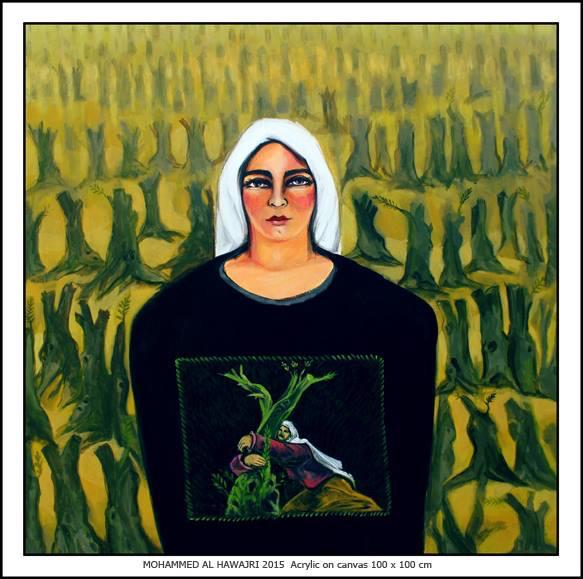
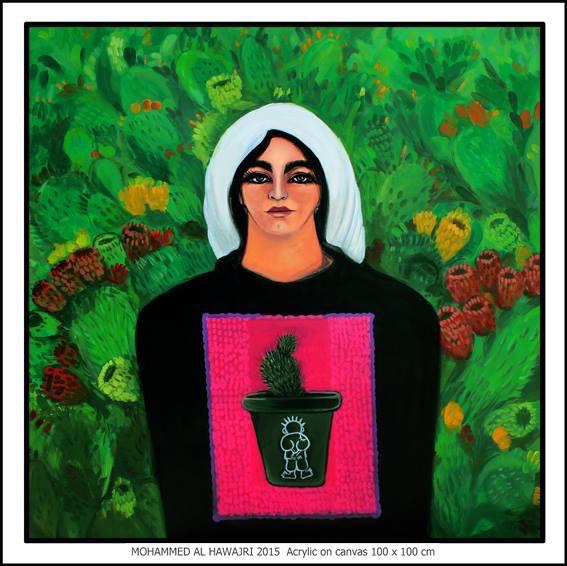

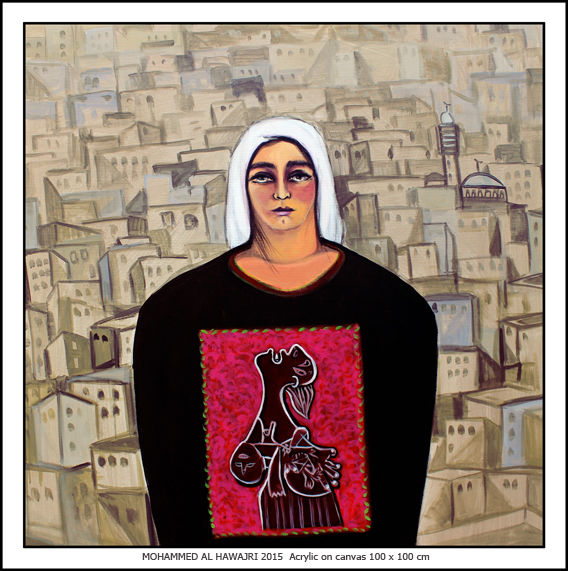
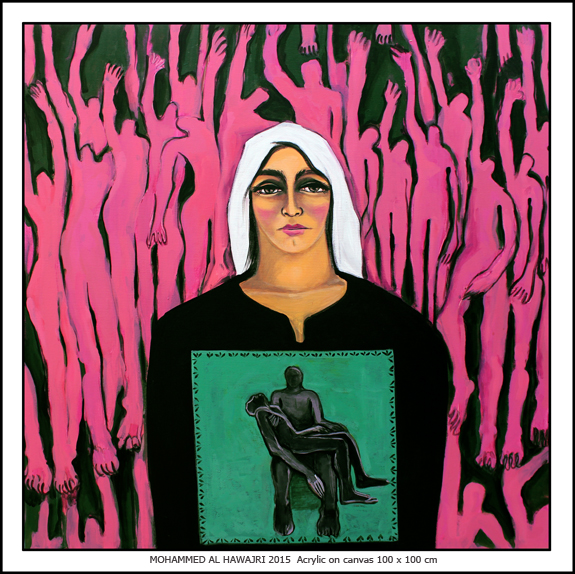
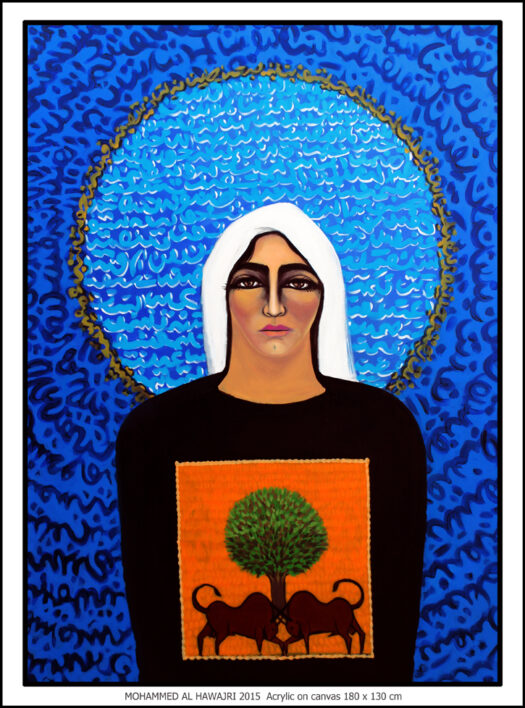
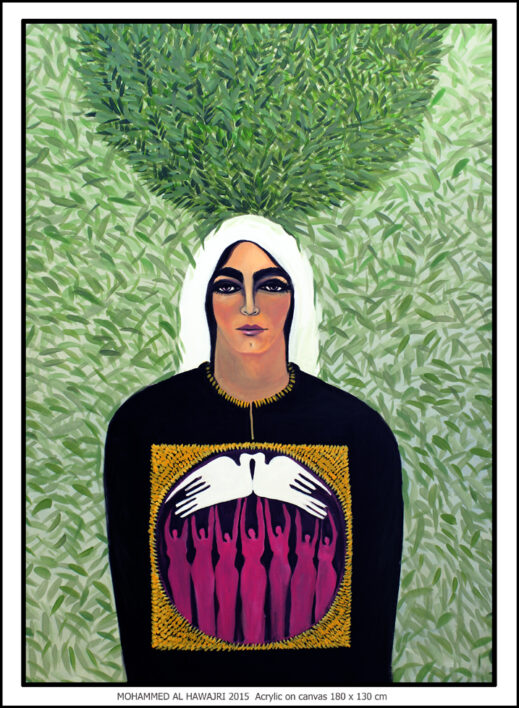



Flight On Winged
About This Article
Sometimes, the artist converges and shares with the children the simplicity of their dreams and ambitions and their childish pursuit of them. I remember that, in my childhood, I imagined, more than anything else, supernatural beings capable of flying, I saw them in my mind as they were flying beyond the possible, beyond all that a child could reach. I grew up in Gaza, the most suffocated place in the world due to the blockade, restrictions on movement and travel bans, making even the smallest and simplest dreams impossible prospects. But the child I was once, brings me back and facilitates my dream path, and today I am using my childhood and my imagination to dream about this winged animal that will carry me over Gaza, over the sea, and over the siege to Jerusalem. Mohammed Al-Hawajri December 2021 Business information:- Triple action Krylik on canvas. Size / single panel 120x80cm / total size 240x120cm Production / October 2021


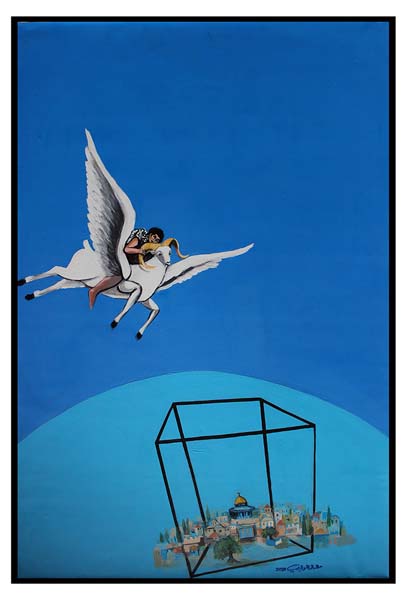
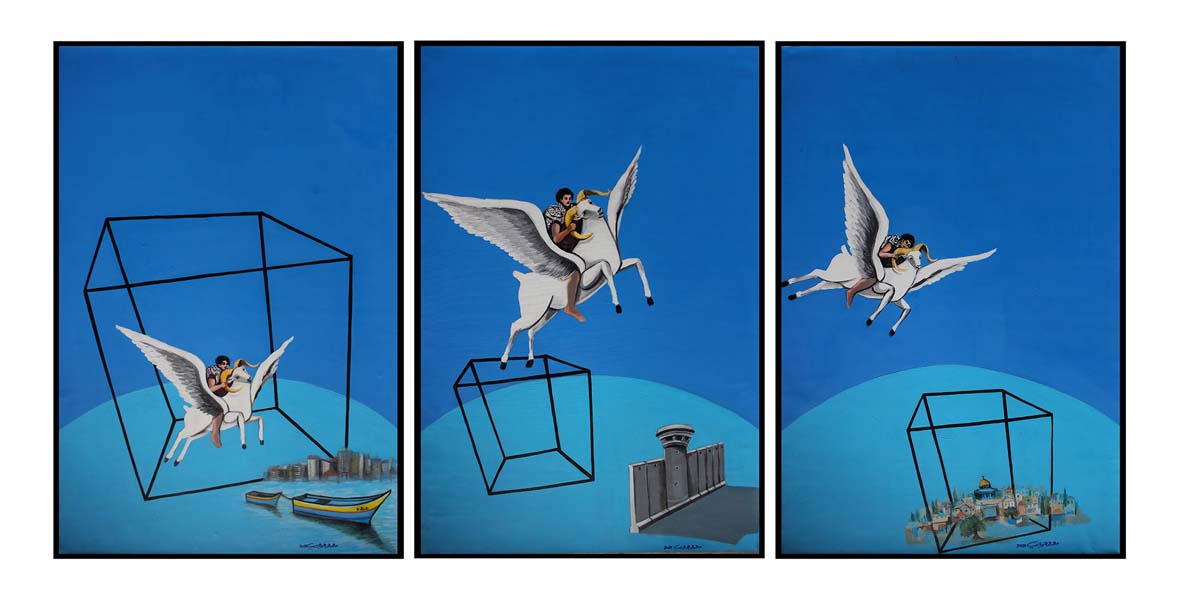

Lion of Gaza
About This Article
Lion of Gaza. Acrylic on canvas. 180 * 130cm for each panting. These paintings are inspired by a true story of a poor family living in a refugee camp in the Gaza Strip, not the circus family that Picasso painted in his paintings.
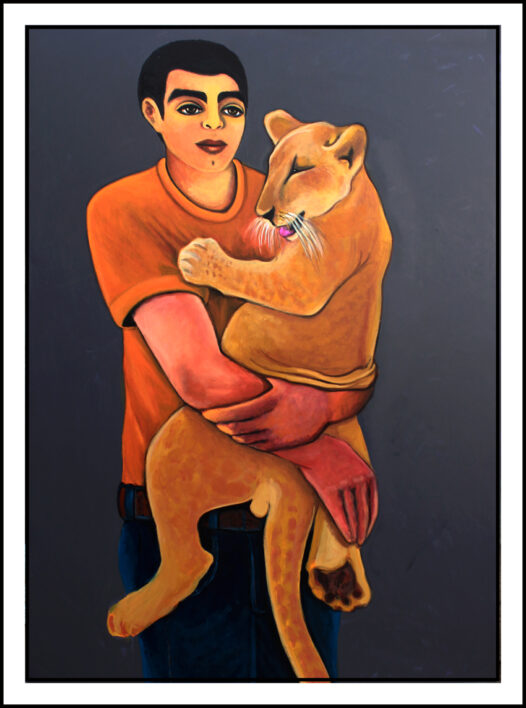

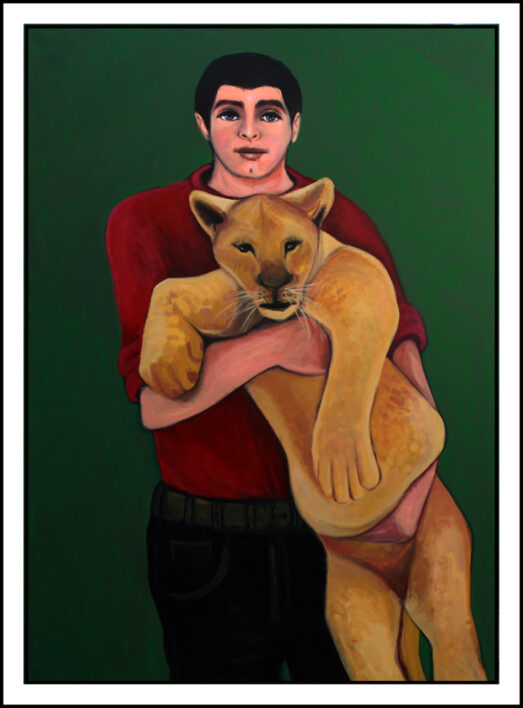
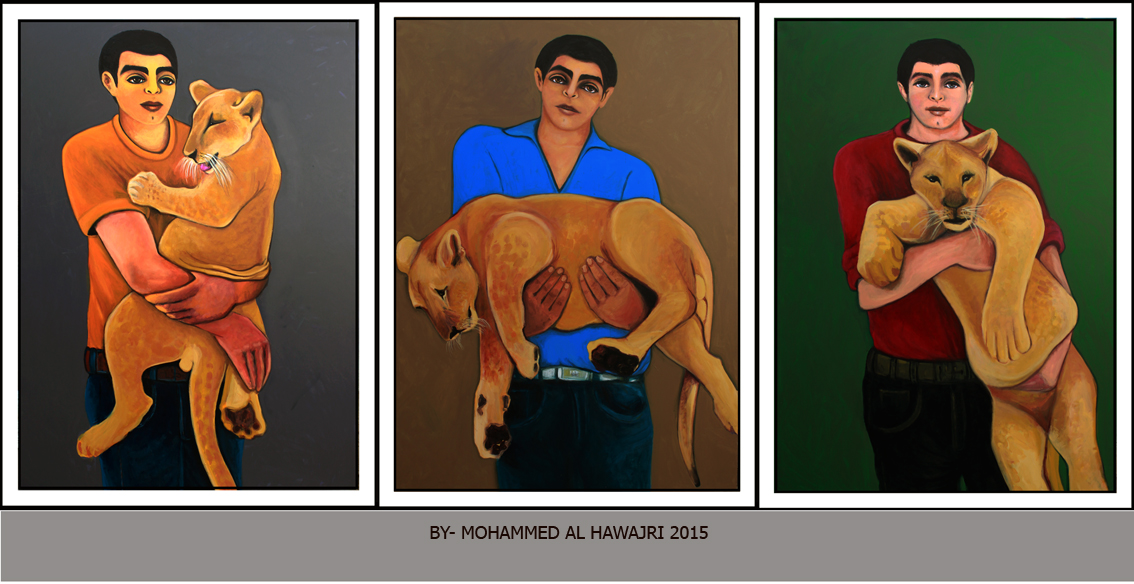

Animal Farm
About This Article
Animal Farm Animals remind me of a time when my mother inherited a red goat from my grandmother. This goat was a source of self-sufficiency offering a decent standard of living. Animals have several roles in life in accord with their kinship with humans. This relation began with cave drawings and stories and tales from Kalila and Dimna. [It is also present in] the relationship between Gandhi and the goat, the statues of Babylonian civilization in Iraq, the Chinese legends of imagination [fantasy] and horror, worshiping cows in India, the symbols of the Pharaohs in Egypt, children’s cartoons and the modern-day cinema. All these represented animals as expressive of events that were directly related to beliefs of humans from different walks of life. About my vision: it is an attempt to take advantage of the above. In my visionary language, I see in animals the aesthetics of color that have the ability to broadcast joy [in the eye of the beholder], through its diverse forms, varying shades and sizes as well as the natural decoration that distinguishes each animal from the other. All that compelled me to think of a new collection of paintings inspired from this natural texture that has strong ties with human life since time immemorial. Animals are companions that have had a decisive blow dealt to their living conditions; still he was a good friend to him: accompanied him on his travels, helping him to continue on, guarding over him and preserving his money and home. Among the many things that sparked my imagination to erect these busy and intricate paintings was the thought that it was as if it were a music recital made of lines of color simmering inside me.
